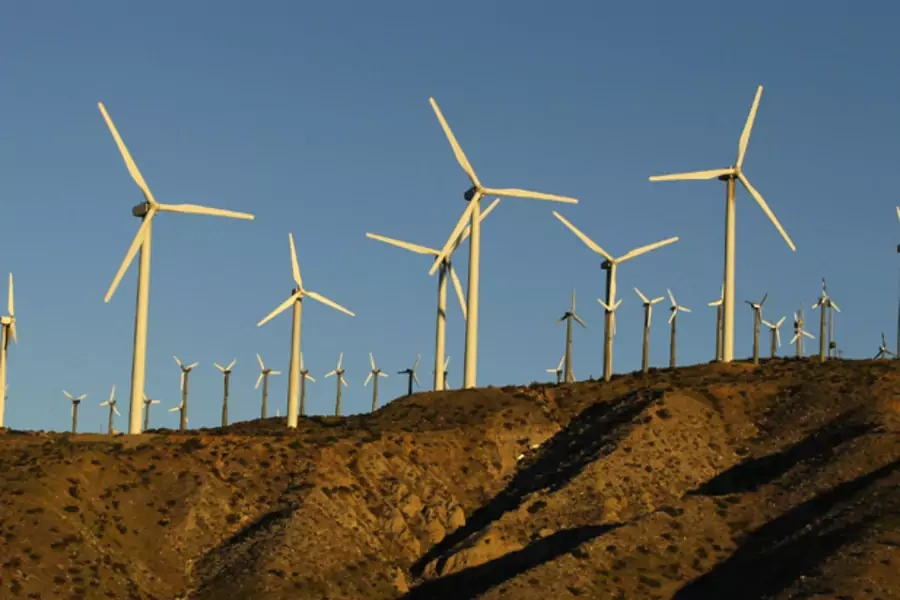Guest Post: Ralls vs. CFIUS: What Are the Implications for Chinese Investment?

More on:
The following is a guest post by two of the leading experts on Chinese foreign direct investment in the United States, and on the U.S. government's investment review process. Thilo Hanemann is Research Director at the Rhodium Group, an economic research firm based in New York, and Daniel Rosen is China Practice Leader at Rhodium and a visiting fellow at the Peterson Institute for International Economics.
Last week President Obama issued an Executive Order requiring Chinese-controlled Ralls Corporation to abandon a wind farm project near a military base in Oregon and divest all related assets. This is only the second time a U.S. President has formally blocked a foreign acquisition, and the first since 1990. Ralls presents an interesting case, but there are a lot of misperceptions about the motivations for the decision to block the deal, and about the implications.
First, this was not a political move by the President to position himself as tough on China, as suggested by some. The timeline of the review through the Committee on Foreign Investment in the United States (CFIUS) and the Presidential decision is set by law and the fact that the President was forced to make a decision resulted from Ralls’ refusal to walk away from the investment after the negative CFIUS decision, as firms commonly would. Having made news, the deal could well enter the campaign now, given Ralls’ decision to try suing the President and CFIUS, but no one in Washington set out to make this a political game.
Second, and most importantly, the decision does not signal a more restrictive U.S. policy towards Chinese investment. Rather it demonstrates continuity with regard to espionage concerns related to geographic proximity of assets to defense installations. Several previous Chinese investments have been stalled for the exact same reason (see Northwest Nonferrous-Firstgold, TCIC-Emcore, Far East Golden Resources -Nevada Gold). Chinese firms have not had trouble acquiring and equipping U.S. wind farms more distant from such sensitive areas – see Goldwind’s Shady Oaks Project in Illinois or Sany’s other wind farm in Texas, for example. Neither is this a case of retaliation by the U.S. government to punish Sany for its protectionist stance toward the attempted takeover of Xugong by Carlyle in 2006. The United States continues to be open to Chinese investment while screening for a narrow set of national security concerns.
Third, the decision confirms that Chinese investors face special scrutiny with regard to espionage concerns. Given the wording of the Executive Order and the condition to remove all existing equipment and installations, espionage concerns related to Chinese-made equipment close to high-tech defense installations is the most likely reason for the negative CFIUS decision. The combination of past espionage by some Chinese firms and poor corporate governance transparency in China will incline the security community to pay especially close attention to Chinese firms no matter if they are state-owned or private. Wind installations in the same area equipped with turbines from Denmark are not raising the same concerns.
Fourth, the case makes clear that closing deals with a certain risk profile (in this case proximity to an advanced weapons testing station involving unmanned drones and electronic warfare aircraft) without first filing with CFIUS is a mistake. Similar to other failed investments (such as Huawei-3Leaf), CFIUS reportedly found out about the deal from media and then asked Ralls to file with the inter-agency body. While Ralls had interaction with the Department of Defense (similar to Huawei with the Department of Commerce in the 3Leaf case), it was wrong to assume that regulatory approval outside of CFIUS from one of the various government bodies with a seat at the CFIUS table is enough in such cases. The lesson learned from Huawei-3Leaf should have been that not filing will raise suspicions and limit the time for discussing mitigation options with CFIUS.
Fifth, the lawsuit by Ralls against the President and CFIUS will not overturn the decision, but it might help clarify some important questions about the mandate and jurisdiction of CFIUS. In its amended court filing, Ralls complains that CFIUS and the President exceeded their legal mandate, for example by imposing certain divestment conditions on the company. The court may help clarify these competencies. In addition, the Ralls case points out an important inconsistency in Washington’s ability to address espionage concerns related to foreign ownership: had Sany not acquired Oregon developers but rather built wind farms as greenfield projects on leased land, CFIUS would have had no legal mandate to investigate. Instead, any espionage concerns would have had to be dealt with through domestic counter-espionage laws, with vastly higher evidence standards, a contestable appeals process, and a longer lead time – all of which are absent under CFIUS.
The Ralls case offers an opportunity to discuss these important questions and refine the understanding of the CFIUS mandate and process. However, the case will not substantially change the current U.S. policy stance towards Chinese investment. The United States will stick to its traditional openness to foreign investment, but at the same time diligently screen investments for security threats, including commercial and political espionage.
More on:
 Online Store
Online Store